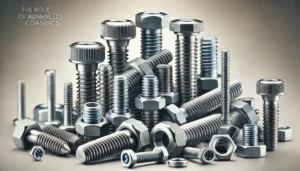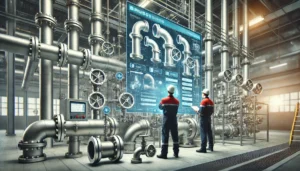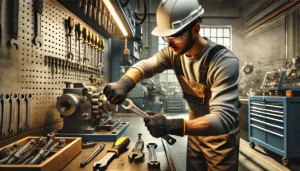In flanging, the pieces of plate or pipe that are joined together serve as an interface for bolts as well as permit the attachment of the valve to the pipe or a piece of equipment. Their main job is to create a joint that is both secure and free from any leaks, which allows fluids and gasses to pass through without any interruption. The design of flanges over time turned out to be more effective and robust. Therefore, they became easier to maintain while increasing operational efficiency.
Advancements in Flange Materials
Performance and longevity of flange components is highly dependent on the materials chosen. Corrosion resistant carbon steel flanges have a low cost and provide simple utility, although they are extremely fragile under harsh conditions. The emergence of stainless steel and alloy steel flanges has countered these challenges where corrosion, high temperatures, and mechanical stresses are dealt with. Also, duplex and super duplex stainless steels are perfect for high demanding applications in chemical processing and offshore oil along with gas, these materials provide high strength along with better resistance to stress corrosion cracking.
Innovative Flange Designs
New designs of flanges added modern features to improve the maintenance and sealing of the flange. An example of gaskets is constant seating stress gaskets which are specifically designed to hold a certain amount of sealing pressure across the entire surface of the flange. The design helps to reduce common gasket failure modes like creep relaxation, thermal cycling, etc, which increases the longevity of the connection. Moreover, and unlike normal gaskets, double-jacketed gaskets are made of metal and are filled with material towards the center. Unlike normal fillers, they are much more effective where pressure and higher temperature are used.
Advancements in Manufacturing Processes
Modern technologies have positively impacted the production of flanges. The use of Computer Numerical Control (CNC) machining eliminates the possibility of dull cutting devices so that there are precise edges and clean surfaces which improves the seal. With the introduction of 3d printing, complex shaped flanges are much easier to make. Also, less resources and time are needed to perfect the end product. The use of robots in automated CNC machines has increased the efficiency and consistency of the product at the same time improving safety and lowering the labor costs.
Real Time Monitoring Through Smart Flanges
Incorporation of smart technology in flange design has enabled real time monitoring. Smart flanges with sensors are capable of measuring and monitoring pressure, temperature, and even vibration for predictive maintenance. This approach enables proactive measures to be taken that help in avoiding failures thus increasing the longevity of the flange connection. Furthermore, the application of AR and VR for flange design and maintenance training has made learning installation and repair processes easier and more efficient.
Customization and Standardization
Standard flanges are still in common use, but there is a rapidly increasing demand for customized flanges that cater to particular application needs. Flanges of specific dimensions, materials, and even performance characteristics can be designed easily with advanced software. Designs of this specificity are needed on specialized applications like high pressure or even corrosive systems because they drastically increase the reliability of the system and significantly lessen the amount of maintenance required.
Conclusion
The development of flange connections has greatly benefited from improvements in design, material choice, and production methods. These have resulted in lower maintenance costs, higher productivity, and greater safety in many fields. With further advancements in technology, even more innovative designs for flanges should be expected which will surely improve the dependability and efficiency of piping systems.










